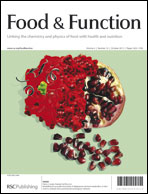Mechanical testing at the whole-bone level of the femur in immature rats stunted by cornstarch consumption
Abstract
Both body weight and somatic muscle forces are the main “mechanical factors” in the determination of bone strength in the “weight-bearing bones”. However, other “non-mechanical factors”, such as dietary proteins, also exist, which modulate bone physiology. This study was designed to explore the mechanical behavior of the femur in post-weaning female rats stunted by feeding on cornstarch. Forty female rats aged 30 days were fed freely with one of the two diets: control (CD) and experimental (ED). CD was the standard rat laboratory diet, whereas ED was cornstarch supplemented with vitamins and minerals. Control (C) and experimental (E) animals were divided into 4 groups: C40 and E40 rats were given CD and ED, respectively, for 40 days; C105 were fed the CD for 105 days; and E40–105 were given the ED for 40 days and then the CD for the remaining experimental period (65 days). Growth of rats was assessed following Parks' model. The biomechanical structural properties of the right femur middiaphysis were estimated using a 3-point bending test. The geometric properties of both the entire bone and the cross-section were determined. The left femur was ashed and both the Ca mass and the Ca concentration were determined. Rats fed the ED failed to achieve normal weight gain. Complete catch-up was observed at the end of a 65 day period of nutritional rehabilitation. The femoral weight and length were negatively affected by the ED, as were the mid-diaphyseal cross-sectional area, the mineralized cortical area, and the cross-sectional moment of inertia. All of these parameters showed incomplete catch-up. The structural bone mechanical properties indicative of strength and stiffness were seriously negatively affected. Intrinsic material bone properties, as assessed by the modulus of elasticity and the maximal elastic stress, were within normal values. In summary, the experimental bone was weaker than the control and structurally incompetent. The considered bone was smaller than the control one, showing a significant reduction in the cross-sectional area and the moment of inertia. However, material properties as well as the ash fraction and Ca concentration were similar in E and C bones. Therefore, E bone is weaker than the C one because of its smaller bone mass, which appears to have been negatively influenced by the ED in relation to its effects on overall body mass.


 Please wait while we load your content...
Please wait while we load your content...